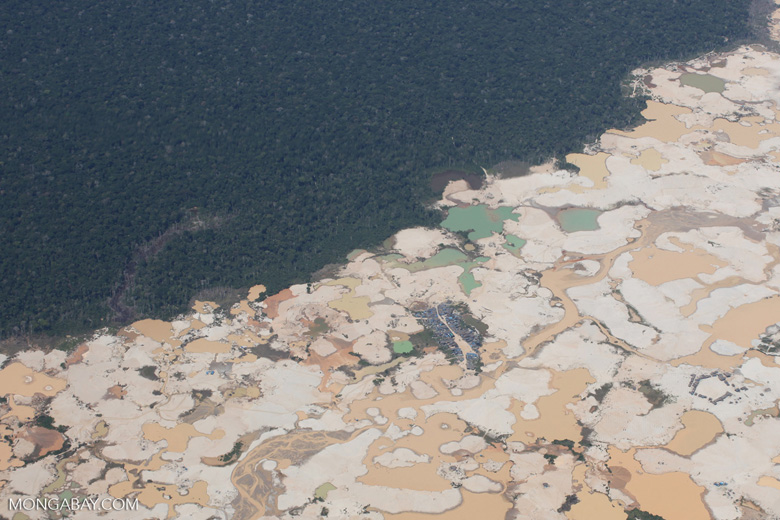- In November 2015, a report released by the Monitoring of the Andean Amazon Project (MAAP) showed that illegal gold mining operations had most likely resulted in the deforestation of around 2,518 hectares of Amazonian rainforest between 2013 and 2015, located mostly within Tambopata’s buffer area in La Pampa, and along the Malinowski river.
- Now, a new report released by MAAP last week shows that illegal gold mining has penetrated deeper into the reserve.
- Between December 2015 and January 2016, illegal miners appear to cleared around 20 hectares of standing forest inside the protected reserve.
Illegal gold mining is ravaging vast swaths of Peruvian Amazon.
In November 2015, a report released by the Monitoring of the Andean Amazon Project (MAAP) showed that illegal gold mining operations had entered Peru’s Tambopata National Reserve, an Important Bird Area recognized by Birdlife International, and home to various rare or threatened species like the Harpy eagle, giant anteater and the lowland Tapir. Tambopata reserve is located in the department of Madre de Dios department in southeastern Peru, where more than 30,000 miners are estimated to be operating without valid permits, according to the Amazon Conservation Association.
The report noted that around 2,518 hectares of the Amazon rainforest had been cleared between 2013 and 2015, most of it linked to illegal gold mining activities. Much of this deforestation was within Tambopata’s buffer area in La Pampa, and along the Malinowski river, which forms the northern boundary of the reserve.
Now, a new report released by MAAP last week shows that illegal gold mining has penetrated deeper into the reserve. Between December 2015 and January 2016, illegal miners appear to have moved further into Tambopata reserve, clearing around 20 hectares of standing forest.


Since 1999, gold mining in the Peruvian Amazon has exploded by 400 percent, according to a 2013 study. This gold rush has had devastating impacts. The massive scale of gold mining has stripped off vast patches of standing trees. And mercury used to extract the gold has contaminated the soil, rivers, fishes, and affected human health.
The Peruvian government seems to be cracking down on illegal gold mining activity. In January 2016, the government launched an operation on illegal gold mining activities within Tambopata reserve.


Correction: 2/09/16 8:15 pm Eastern: the original version of this story incorrectly stated that the Harpy eagle was endangered. Its IUCN Red List status in fact, is Near Threatened. We have corrected the sentence, and we regret the error.
Citation:
- Finer M, Novoa S, Olexy T (2016) Illegal Gold Mining Penetrates Deeper into Tambopata National Reserve. MAAP: 24.














